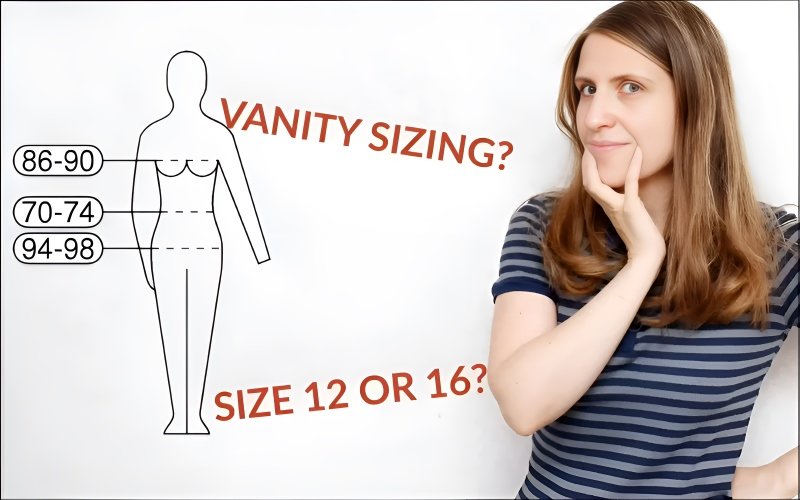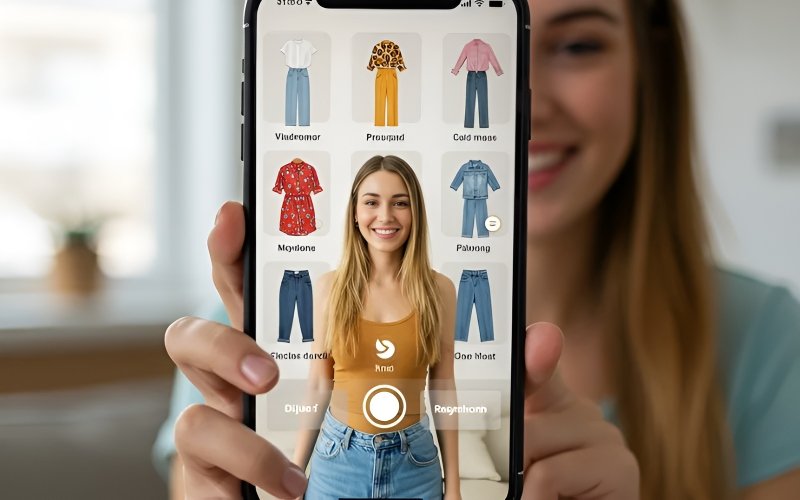Decode Clothing Sizes: Is Vanity Sizing Fact or Fiction?
Are you an online clothing shopper, a fashion retailer, a small clothing business owner, or someone frustrated by the ever-changing and often confusing world of clothing sizes? The inconsistent nature of sizing across brands, combined with the impact on body image, poses a significant challenge for consumers and businesses alike. In the era of increased online shopping and a growing focus on inclusivity, the problem of inconsistent sizing has become more apparent than ever. This article aims to provide clarity on these confusing clothing sizes.
1. Decoding vanity sizing: Fact vs. fiction in clothing labels
1.1 What is vanity sizing really? Unpacking the definition
Vanity sizing, at its core, refers to the practice of labeling garments with smaller sizes than their actual measurements. This is often perceived as a deliberate tactic used by clothing manufacturers to flatter customers and boost sales, creating an illusion of being a smaller size than they might be in other brands.
Conversely, some within the fashion industry argue that vanity sizing is a marketing myth, claiming that manufacturers primarily focus on production efficiency, rather than intentionally manipulating consumers’ egos.
From the vantage point of someone with over eight years of experience in the garment industry, the effect, if not necessarily the intent, of inconsistent and often smaller sizing is very real. It’s the disconnect between perception and reality that lies at the heart of this complex issue.

1.2 The psychological game: How size numbers affect shoppers
The psychological impact of size labels is undeniable. For many shoppers, smaller numbers can trigger positive emotions, boosting self-esteem and confidence. However, the inconsistencies and often-meaningless size labels across different brands and stores lead to confusion and frustration.
These inconsistencies make it nearly impossible for shoppers to confidently determine their size, and they become reliant on trial-and-error. Expert advice: Shift your focus away from the size number and prioritize the actual fit and feel of the garment. Comfort and appearance should take precedence over chasing a specific size label.
2. The Evolution of clothing sizes: A historical look at “Size creep”
2.1 From standards to chaos: The breakdown of size consistency
Attempts to standardize clothing sizes have a long history, particularly in the US. Initial standardization efforts, like the 1940s Works Projects Administration (WPA) study and the 1958 National Institute of Standards and Technology (NIST) standards, aimed to create a universal sizing system.
However, these efforts have gradually eroded over time. This has contributed to the current state of sizing inconsistency. Illustrating the phenomenon of “size creep” is the compelling example of a women’s size 12 in 1958 being comparable to a modern size 6.
From a garment manufacturing perspective, factors such as evolving body shapes, shifting fashion trends, and cost pressures in garment production all challenge the goal of maintaining size standardization over long periods.
2.2 Arguments against “Vanity sizing” as simple manipulation
The concept of vanity sizing isn’t just deliberate marketing manipulation. Manufacturers often target specific consumer profiles with shared body characteristics. The sizing is designed around those profiles, not random adjustments.
Sizing is often derived from “scales” in pattern making, where sizes are based on proportionate measurements for a given size, instead of arbitrary adjustments. Sizing is evolutionary in nature, changing over time alongside shifts in body sizes and shapes. The different demographics mean that the size charts must vary. This, in turn, can lead to size variations, even without an intentional effort to create vanity sizing.
3. The real problems with clothing sizes today: Beyond “vanity”
3.1 The size lottery: Why a size 6 isn’t always a size 6
The clothing market is filled with significant size variations, leading to what many shoppers experience as the “size lottery.” You might find that your usual size fits perfectly in one brand, but is far too small or large in another.
While a six-inch difference in the waistband of a supposed “size 6” pair of jeans might be an extreme outlier, even variations of one or two inches are common. This widespread inconsistency creates a pervasive “fit problem,” particularly noticeable in women’s clothing.
The root of this issue lies in the lack of standardized sizing across the industry, coupled with the beautiful diversity of human body shapes and proportions. No two bodies are exactly alike, and brands often cater to slightly different demographics or use different fit models.
This inconsistency leads to understandable frustration, confusion, and often, negative shopping experiences. When shopping online, where you can’t try things on, carefully consulting brand-provided size charts, paying close attention to detailed garment measurements (if available), and reading customer reviews about the fit can significantly increase your chances of finding the right size.

3.2 The cost of inconsistent sizing: Returns and retail impact
High online clothing return rates, often around 40% and directly linked to sizing issues, come with substantial financial and logistical costs. Retailers bear the burden of processing returns, which impacts profitability and operational efficiency.
Inconsistent sizing can also reduce customer satisfaction, harm brand loyalty, and increase operational overhead. The solution to these problems? Prioritizing accurate sizing, and providing clear, comprehensive size information can significantly reduce return rates and enhance overall customer satisfaction. Investing in detailed size charts, fit guides, and, potentially, virtual fitting tools is critical.

4.1 The dream of universal sizing: Is standardization possible?
The idea of universal clothing sizing, or a truly standardized system is something that might help with the problems of returns, and dissatisfied customers. However, there are significant obstacles to achieving true universal sizing on a global scale. The diversity in human body types is vast. International industry cooperation is complex. It’s best to recognize that there are more practical and effective approaches to address sizing issues.
4.2 Beyond the number: Focusing on fit and feel
Shifting consumer mindset is important. Focus less on the number and prioritize the fit, comfort, and feel of the clothing. Evaluate clothing based on how well it fits your body shape, rather than solely relying on the size label. Celebrate brands that promote body positivity, comfortable fits, and those who de-emphasize size labels. Consider fabric type, garment cut, and construction. Experiment to find the best styles and brands for your body.

4.3 Technology to the rescue? AI and data-driven fit solutions
AI and data-driven algorithms offer potential solutions to online clothing sizing. AI-powered systems can analyze body measurement data and size information to give better fit recommendations to online shoppers. Virtual try-on technologies can improve the online shopping experience and reduce sizing-related returns. Human judgment, personal preferences, and tactile experience will likely remain crucial, even with technological advancements.

4.4 The rebranding of retail: Comfort, authenticity, and inclusivity
There’s an ongoing trend of retail rebranding, with an increasing emphasis on comfort, authenticity, and inclusivity. You will find brands that are expanding size ranges to be more inclusive of diverse body types and actively featuring diverse models in their marketing campaigns.
This reflects changing consumer values, a growing demand for inclusive fashion, and a rejection of unrealistic beauty standards. This societal conversation around body image is important, and the fashion industry is responding.
5. FAQs about vanity sizing
5.1 Is vanity sizing only in women’s clothing?
While it’s more prevalent in women’s wear, some degree of vanity sizing is seen in men’s clothing as well. The pressure to fit into smaller sizes affects both genders, but marketing and societal pressures are often more intense for women’s sizing.
5.2 Does vanity sizing mean I’m actually a smaller size than I think?
Vanity sizing makes the label smaller, but doesn’t change your body measurements. Focus on how the clothes fit, not the number on the tag. Finding clothes that fit well is more important than a “true” size.
5.3 How can I find my “true” size when shopping online?
Finding your “true” size online is less about a number, and more about using accurate measurements. Always check brand size charts and measure yourself carefully (bust, waist, hips) for the most useful comparison. Reading customer reviews and understanding that sizing varies by brand can also help.
5.4 Are all brands using vanity sizing?
No. Some brands prioritize “true-to-size” fits, while others may lean towards vanity sizing. Research brands. Compare size charts, and read reviews to understand the sizing tendencies for each brand.
5.5 Is vanity sizing unethical or just smart marketing?
It is a complex issue. Marketing-wise, it can be seen as catering to consumer desires. However, it can be viewed as deceptive and potentially contribute to negative body image issues by exploiting insecurities and unrealistic ideals. Transparency in sizing is a more ethical approach.
Packlove has over eight years of experience in the garment industry, especially in processing clothing labels and tags. We understand the importance of accurate sizing information. We specialize in providing high-quality, custom labels and tags that communicate this information clearly to your customers.
Visit our website at https://mypacklove.com/ or contact us at [email protected] to explore our options and contact us for a free consultation.
Read more:
Navigating the complex landscape of clothing sizes requires a shift in perspective. Understanding the history and psychology behind size labels, and acknowledging the limitations of the current system, is essential for both consumers and clothing businesses. By prioritizing fit, comfort, and individual body measurements over size numbers, we can create a more positive and empowering shopping experience.
Businesses can minimize the financial impact of returns and strengthen brand loyalty by investing in clear, accurate size charts, embracing technology, and promoting inclusive practices. With conscious effort, you can find clothes that fit and feel good, regardless of the size label, and contribute to a more satisfying and body-positive relationship with fashion.






















